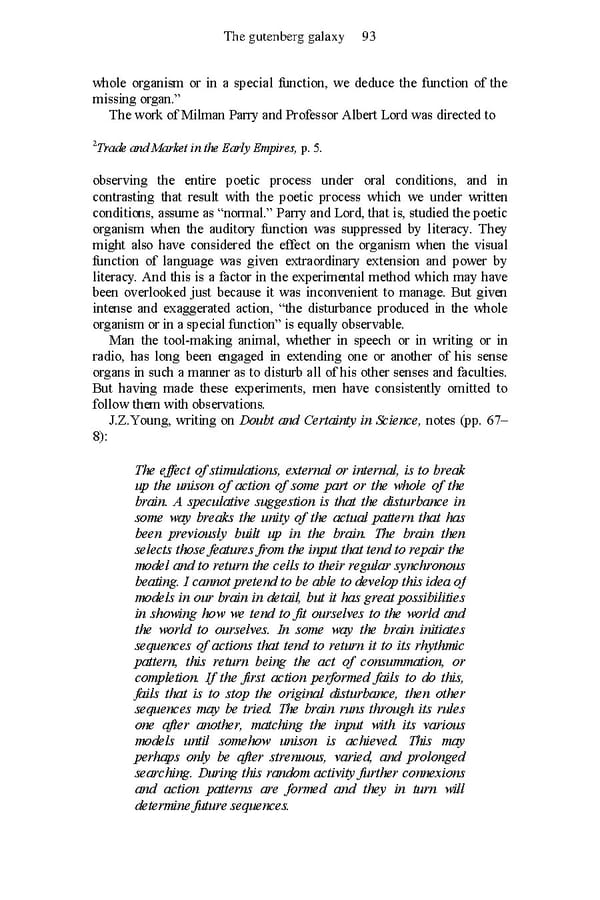The gutenberg galaxy 93 whole organism or in a special function, we deduce the function of the missing organ.” The work of Milman Parry and Professor Albert Lord was directed to 2 Trade and Market in the Early Empires, p. 5. observing the entire poetic process under oral conditions, and in contrasting that result with the poetic process which we under written conditions, assume as “normal.” Parry and Lord, that is, studied the poetic organism when the auditory function was suppressed by literacy. They might also have considered the effect on the organism when the visual function of language was given extraordinary extension and power by literacy. And this is a factor in the experimental method which may have been overlooked just because it was inconvenient to manage. But given intense and exaggerated action, “the disturbance produced in the whole organism or in a special function” is equally observable. Man the tool-making animal, whether in speech or in writing or in radio, has long been engaged in extending one or another of his sense organs in such a manner as to disturb all of his other senses and faculties. But having made these experiments, men have consistently omitted to follow them with observations. J.Z.Young, writing on Doubt and Certainty in Science, notes (pp. 67– 8): The effect of stimulations, external or internal, is to break up the unison of action of some part or the whole of the brain. A speculative suggestion is that the disturbance in some way breaks the unity of the actual pattern that has been previously built up in the brain. The brain then selects those features from the input that tend to repair the model and to return the cells to their regular synchronous beating. I cannot pretend to be able to develop this idea of models in our brain in detail, but it has great possibilities in showing how we tend to fit ourselves to the world and the world to ourselves. In some way the brain initiates sequences of actions that tend to return it to its rhythmic pattern, this return being the act of consummation, or completion. If the first action performed fails to do this, fails that is to stop the original disturbance, then other sequences may be tried. The brain runs through its rules one after another, matching the input with its various models until somehow unison is achieved. This may perhaps only be after strenuous, varied, and prolonged searching. During this random activity further connexions and action patterns are formed and they in turn will determine future sequences.
 Essential McLuhan Page 99 Page 101
Essential McLuhan Page 99 Page 101